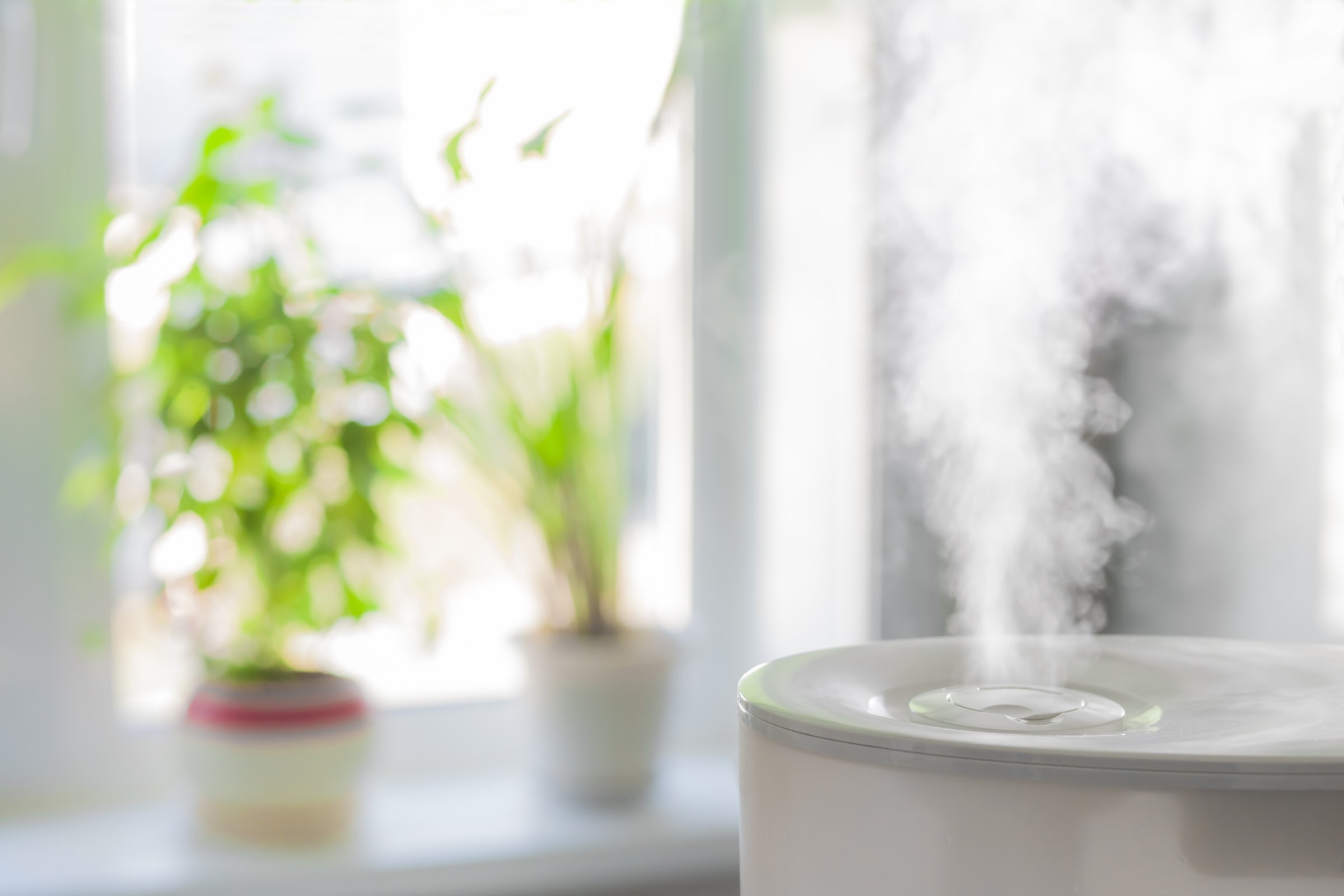
Your skin cracks and bleeds, your lips shrivel to prunes and your nose feels stuffy and inflamed. Not only is dry winter air uncomfortable, but experts say those skin changes weaken your body’s defenses against sickness-causing germs. It’s no wonder Americans buy roughly 10 million humidifiers each year.
But depending on how frequently you clean your machine—and the type of water you fill it with—you may be inhaling harmful microorganisms.
“While moisture can be a positive thing, it also poses problems,” says Janice Nolen, an indoor air specialist and assistant vice president for national policy at the American Lung Association. “Moist environments provide a wonderful breeding ground for mold and bacteria.” If you neglect to clean your humidifier properly, it can quickly become a cozy incubator for germs—one that aerosolizes those microorganisms and mists them into the air you breathe, she says.
Lung issues, from flu-like symptoms to serious infection, are your main worries, according to the Consumer Product Safety Commission (CPSC). Experts have also identified something they call “humidifier fever,” a form of viral lung inflammation caused by colonized humidifier bacteria.
While inhaling these agents is bad for everyone, it could be especially harmful for kids and those with asthma or breathing problems. The authors of one case study from the University of Utah discovered that an infant had developed a serious lung injury after breathing in humidifier “white dust,” or the powdery build-up of calcium, magnesium and other metal deposits that can form on the inside of the machine’s reservoir. “This case raises important questions about the safety of exposing infants and young children to humidifiers,” the authors of that study write. A 2005 government report on pediatric asthma also cautioned against the use of humidifiers.
Of course, a lot of things are harmful when used improperly. The biggest concern with humidifiers may be operator error—or the fact that most of us don’t keep our machines clean. A past report from the Environmental Protection Agency recommends washing out your humidifier every third day, but Nolen says even that guidance may be too relaxed. “I’d say at least every three days, and every day would be better,” she says.
She recommends using plain dish soap and warm water, taking care to scrub the sides of your water reservoir to remove any deposits. “Be careful about cleaning agents,” she adds. In 2011, there was an outbreak of lung infection among patients at a Korean hospital. An investigation concluded that “humidifier disinfectants” were to blame. While the types of disinfectants linked to that hospital outbreak aren’t likely to turn up in your home, Nolen says you don’t want to use harsh chemicals. Again, plain dish soap, hot water, and elbow grease are your best cleaning tools.
The water you use to fill your tank could also cause issues. Both the CPSC and the EPA recommend filling your humidifier with distilled water—not tap—to keep potentially harmful microorganisms out of the air you breathe. But a study from the University of Colorado suggests that’s overkill. While the researchers found the water used to fill a humidifier does dictate its bacterial profile, few of the microorganisms they turned up could lead to health concerns. (Worth noting is that they were looking at humidifiers filled with Rocky Mountain water from their state’s Front Range, which has a reputation for being very clean. Their findings might not hold in other places.)
Assuming you’re good about cleaning your humidifier and filling it with distilled water, you also need to be careful about moisture around your machine. If your humidifier is cranked up so high that it’s surrounded by a scrim of wetness, that’s bad. “Moisture feeds a lot of things we don’t want in our homes, like mold and spores,” Nolen says. “You want to keep the humidity in your home at or below 50%.” (You can buy an indoor humidity monitor for about $10.) If you’re accustomed to running your humidifier at its most powerful, “I can see the mist!” setting, you may want to turn it down.
Finally, based on its own tests, the EPA says “evaporative” or “steam vaporizer” humidifiers may spit out fewer microorganisms than “ultrasonic” or “cool-mist” machines. (There’s some recent research to support this advice.)
Or you could just move to Florida.
More Must-Reads from TIME
- How Donald Trump Won
- The Best Inventions of 2024
- Why Sleep Is the Key to Living Longer
- Robert Zemeckis Just Wants to Move You
- How to Break 8 Toxic Communication Habits
- Nicola Coughlan Bet on Herself—And Won
- Why Vinegar Is So Good for You
- Meet TIME's Newest Class of Next Generation Leaders
Contact us at letters@time.com